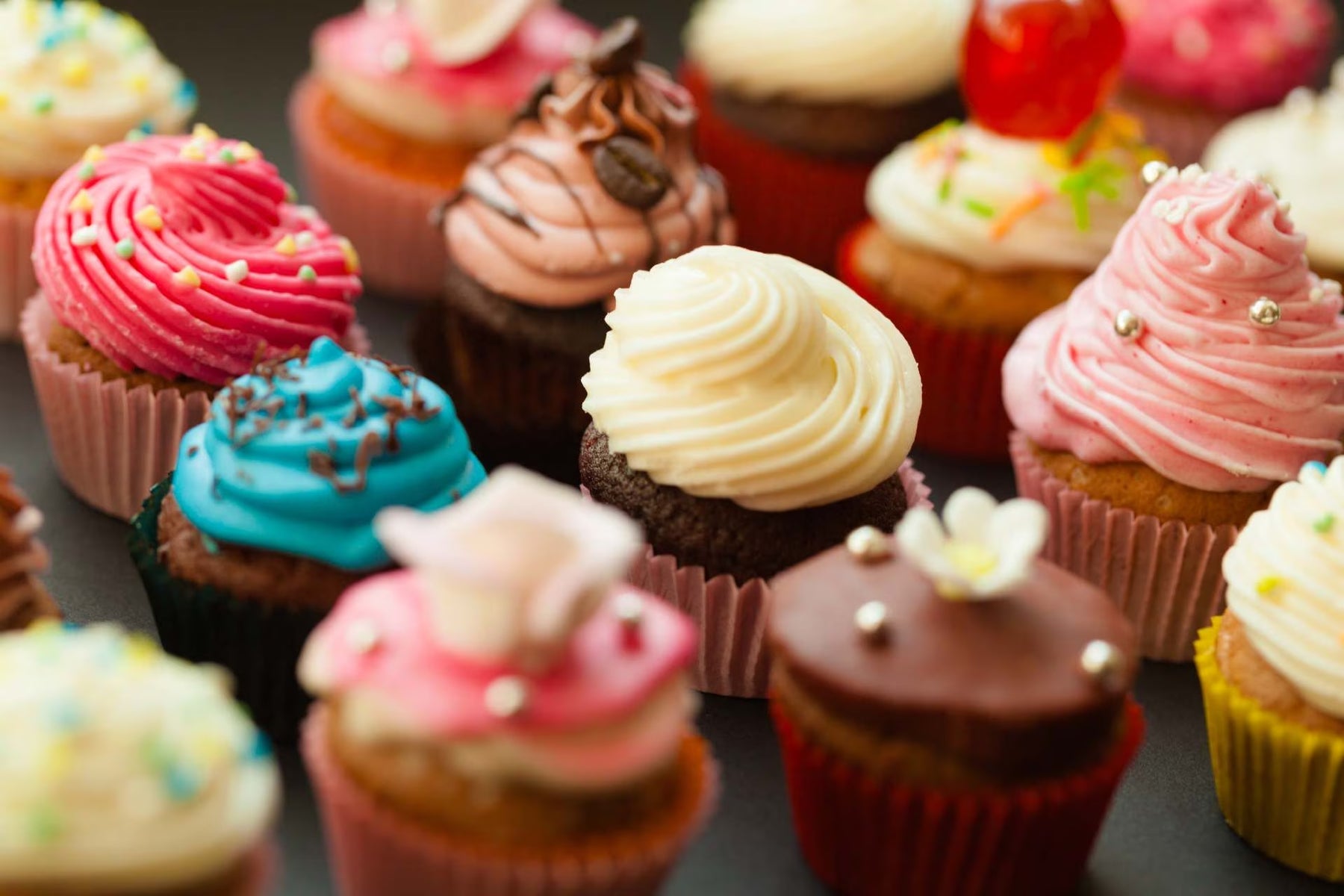
12 Types of Frosting: The Definitive Guide
Whether you’re looking to create a smooth finish on a cake or pipe buttercream roses for decoration, the type of frosting you use can make a difference for the successful presentation of your baked goods. So, Let's explore some common frosting types that you can use in your bakery.
Before you can frost a cake, you’ll have to choose the perfect frosting to pair with your recipe. We’ve created a guide of cake frosting types to help you understand their differences and find the best one for your culinary creations.
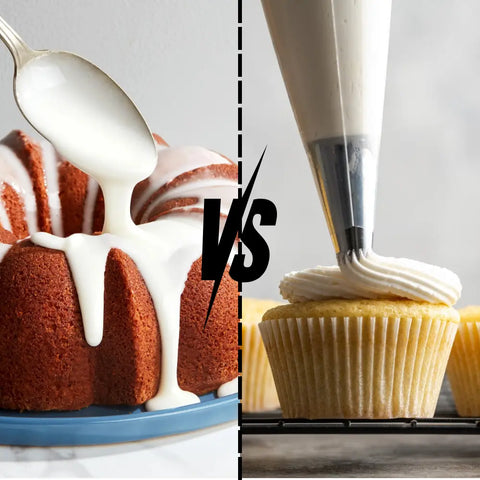
Frosting vs Icing
The difference between frosting and icing is that frosting is usually thick, creamy, and spreadable, while icing is typically thin, piped or drizzled on, and will harden when it cools. Frostings are usually used to thickly coat or top cakes and cupcakes, while icings are mostly used for decorations and for light sugary coatings on cookies and donuts. Both frosting and icing are staples in professional and home bakeries.
Types of Frosting
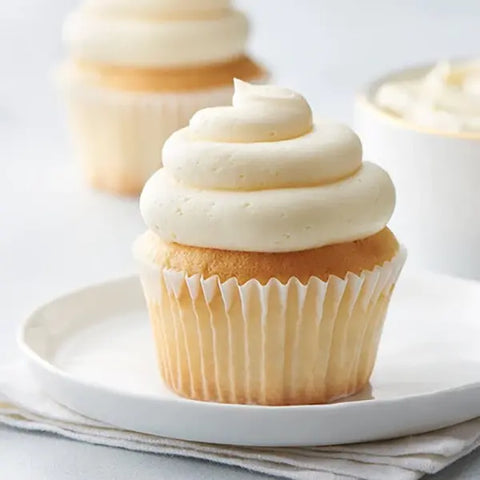
1. Buttercream Frosting
Buttercream frostings rely on the main ingredient of butter and will be the most common type of frosting you will find in a bakery. Plain buttercream is also referred to as simple buttercream frosting. Simple buttercream is considered a beaten butter frosting (which whips the butter first) as opposed to a cubed butter meringue frosting (which had butter chunks slowly added to the frosting).
- Flavor: Very sweet, probably the sweetest of the different types of buttercream
- Color: Ivory
- Texture: Thick and creamy; can become slightly grainy or greasy if improperly mixed; can develop thin crust over time
- Stiffness: Soft and pipeable, can melt in warm settings and should be added to cooled sponges
- Uses: Pairs well with most cake sponge flavors, commonly used for sheet cakes and cupcakes
- Difficulty: Easy; requires few tools and ingredients to make it
How to Make Buttercream Frosting
To make buttercream, you’ll need to combine a type of fat (typically butter or vegetable shortening) with a sweet base, usually powdered sugar (aka confectioners sugar or icing sugar). Beat room-temperature butter in a mixer until it is smooth.
- Mix sugar into the butter and whisk to form a smooth and airy consistency.
- Additional flavoring can be added at this time to tailor the frosting for your recipe.
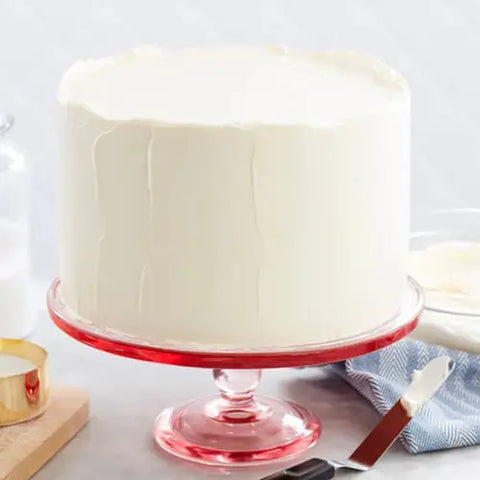
2. Swiss Meringue Buttercream
Swiss meringue buttercream is often just referred to as Swiss buttercream and is a cubed butter meringue frosting. This buttercream is subtle in flavor and easy to pipe, making it a great choice for more elegant bakes.
- Flavor: Mild buttery sweetness; can be easily flavored due to its subtle flavor
- Color: White
- Texture: Silky, smooth, and creamy; known for it’s airy texture
- Stiffness: Soft, may start to develop bubbles if left out but can be fixed by re-mixing; will melt in warm settings
- Uses: Frosting used for wedding cakes to achieve a perfectly white coating
- Difficulty: Medium; requires the use of a stove, mixer, and candy thermometer; it can curdle or separate if made incorrectly
How to Make Swiss Meringue Buttercream
To make Swiss buttercream, you’ll want to separate egg whites to form the meringue base. Make sure the eggs are room temperature and that no yolks end up in the mixture. Yolks may impact its ability to fluff up. Always make sure your mixing bowl and whisk are completely clean before you start.
-
Whisk together the egg whites and sugar.
-
Cook the sugar and egg mixture in a double boiler (aka Bain Marie) and whisk it until the mixture reaches 160 degrees Fahrenheit or until all of the sugar granules have dissolved.
-
Whisk the cooked mixture in your mixer until you achieve stiff peaks and it is room temperature.
-
Once the meringue is cooled, add room-temperature butter, one tablespoon at a time while mixing.
-
Keep mixing until you achieve stiff peaks again.
-
Add flavoring and gently mix to incorporate.
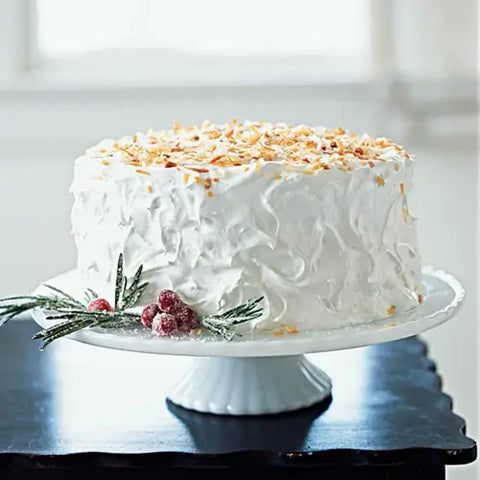
3. Italian Meringue Buttercream
Italian meringue buttercream or Italian buttercream is a cubed butter meringue frosting and a staple in the cake baking industry because it is less prone to melting in warmer climates. The taste and texture make it a go-to option for bakers catering upscale events.- Flavor: Mild buttery sweetness; can be easily flavored to complement your sponge
- Color: White
- Texture: Creamy, smooth, and silky
- Stiffness: Highly stable; will hold up relatively well in warmer conditions
- Uses: Smooth finish is perfect for decorating birthday cakes, wedding cakes, and pies, especially for outdoor events
- Difficulty: Hard; considered to be the most difficult of the meringue buttercreams because of its need for accurate measurements, temperatures, and mixing speeds
How to Make Italian Meringue Buttercream
To make Italian buttercream, you will need a range top, mixer, and a candy thermometer. This recipe uses room-temperature egg whites only, so you’ll want to separate out the yolks. Check to make sure your mixing bowl and whisk are clean before starting.- Add egg whites, cream of tartar, and a pinch of salt to a mixing bowl and start the mixer on low, gradually increasing to medium speed.
- Slowly add sugar to the meringue and mix until soft peaks are achieved.
- In the meantime, heat sugar and water on a medium-high heat until the candy thermometer reaches between 235-240 degrees Fahrenheit.
- Bring your mixer to a slow speed and slowly drizzle in the sugar syrup.
- Once the syrup is in, increase the mixer speed until you achieve soft peaks.
- Turn off the mixer and allow the meringue to reach room temperature (you can place ice packs around the bowl to speed up the process).
- Once at room temperature, bring the mixer to a slow speed and add a tablespoon of butter at a time, mixing until you achieve stiff peaks.
- Add your flavoring and gently mix to incorporate.

4. French Buttercream
French buttercream is a cubed butter frosting and the richest of the buttercreams. Unlike Swiss and Italian buttercreams, it is not a true meringue because it uses egg yolks rather than egg whites. French buttercream and French meringue buttercream are not the same kind of frosting. French meringue buttercream is made with uncooked egg whites, sugar, and butter. Because the egg whites do not get cooked in the process, it is considered unsafe to consume unless you are planning to cook the final product or use pasteurized eggs.- Flavor: Rich and buttery; similar in flavor to custard, but mildly sweet
- Color: Yellow
- Texture: Creamy, thick, and silky
- Stiffness: Soft, does not hold its shape very well and will melt in warm conditions
- Uses: Because of its soft consistency, this frosting is mainly used for fillings, cupcake frosting, and the base for fruit tarts
- Difficulty: Hard; sugar temperature needs to be monitored so it doesn't get too hot and crystalize
How to Make French Buttercream
When making French buttercream, you’ll want to use room-temperature egg yolks rather than the egg whites. You will need a range top, candy thermometer, and mixer to combine the ingredients.- Make the sugar syrup by combining the sugar with some water and heat it in a pan until it hits 240 degrees Fahrenheit.
- Mix the egg yolks and a pinch of salt on a medium speed.
- Switch the mixer to a low speed and slowly drizzle the sugar syrup into the bowl.
- Increase the mixer speed to medium and whisk until the mixture is room temperature.
- Add room-temperature butter to the bowl, one tablespoon at a time, while mixing.
- Finish by adding flavoring.
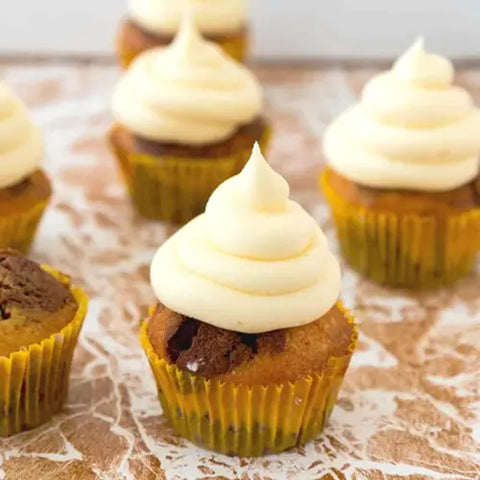
5. German Buttercream
German buttercream is a beaten butter frosting and can also be referred to as custard buttercream or pastry-cream butter. The unique recipe is rare in the bakery scene but can be a great change of pace over a traditional buttercream.
- Flavor: Slightly rich and custard-like, almost ice cream-like flavor
- Color: Pale Yellow
- Texture: Creamy, airy, and smooth
- Stiffness: Soft and pipeable; not very stable; will melt in warmer conditions
- Uses: Cupcake frosting or a filling for pastries, but not a great choice for decorations
- Difficulty: Medium; a custard will need to be made before the frosting can come together
How to Make German Buttercream
To make German buttercream, you will first need to make the rich pastry cream or custard that serves as the base of the frosting. This recipe uses whole eggs, unlike most buttercream recipes which usually just use the whites or yolks.
- Using a saucepan, start by heating milk to a simmer over a medium heat and steeping any additional flavors you are looking to add.
- Whisk the cornstarch (or flour), sugar, and room-temperature eggs on a medium speed in a mixer.
- Slowly add half of the simmered milk into the egg mixture while whisking.
- Transfer the egg mixture into the saucepan with the remaining milk over a medium-low heat and bring the mixture to a boil as you whisk.
- Turn the heat to low and whisk for approximately 2 more minutes.
- Transfer the custard to a shallow pan and spread it out to cool.
- In a separate bowl, beat butter on a medium-high speed until fluffy.
- Add one tablespoon at a time of custard into the whipped butter while the mixer is running until it is fully incorporated.
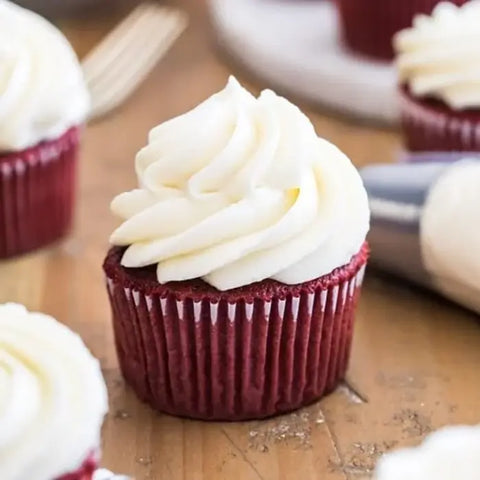
6. Ermine Buttercream
Ermine buttercream is commonly referred to as flour buttercream, cooked frosting, or boiled-milk icing. It is a beaten butter frosting that most consumers are not aware of but is usually found in pre-packaged supermarket pastries. Ermine frosting usually serves as an eggless alternative to Swiss meringue buttercream.
- Flavor: Mild sweetness; can be flavored to complement the sponge
- Color: Ivory
- Texture: Airy, creamy, and silky
- Stiffness: Very soft and pipeable; will melt in warmer conditions
- Uses: A great frosting for cakes and cupcakes but will not hold up well for decorations; often used to frost red-velvet cakes and fill small treats.
- Difficulty: Medium; requires a range top and a variety of ingredients
How to Make Ermine Buttercream
Ermine buttercream requires some cooking before the buttercream can come together, earning it the name cooked frosting. You will need a saucepan, range top, and mixer to prepare this frosting.
-
Add flour and sugar to a saucepan and whisk over a medium heat for about 2 minutes.
-
While whisking, slowly add the milk, pouring a little at a time.
-
Once all of the milk is added, bring the mixture to a medium-high heat and whisk until it thickens to a pudding-like consistency.
-
Pour the mixture into a mixing bowl and cover it with plastic wrap so that the wrap is touching the surface of the mixture. Set aside to cool.
-
Place room-temperature butter in the bowl of your mixer and whisk on high until fluffy.
-
Slowly add the cooled mixture to the butter, one tablespoon at a time.
-
Add your flavoring and mix on low to incorporate.

7. Cream Cheese Frosting
Cream cheese frosting is best known for its tangy flavor. It is considered a beaten butter buttercream frosting but uses cream cheese for most of its fat instead of the butter.
- Flavor: Tangy and sweet
- Color: White
- Texture: Smooth and creamy
- Stiffness: Pipeable and soft; can begin to melt and become runny in warmer conditions; frosting should be refrigerated when not in use
- Uses: Usually paired with moist sponges like red velvet cupcakes, carrot cake, and hummingbird cake
- Difficulty: Easy; requires few ingredients and supplies
How to Make Cream Cheese Frosting
Similar to American buttercream, cream cheese frosting is made with a fat and a sweet base. A mixer or bowl and whisk is typically the only equipment needed to make this frosting.
-
On a medium speed, mix together room-temperature full-fat brick-style cream cheese and butter until the mixture is well combined and clump-free.
-
Add in vanilla extract and salt and continue mixing.
-
On a low speed, slowly add the powdered sugar until it is fully incorporated.
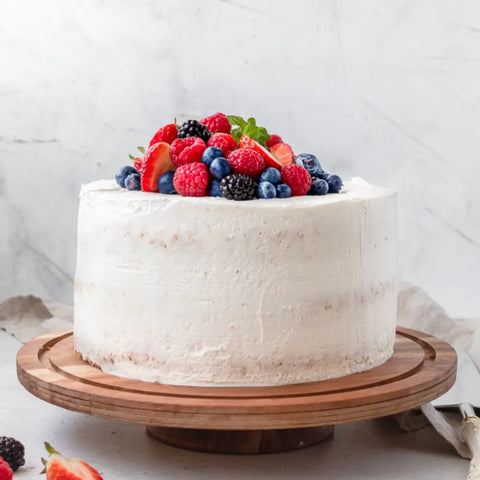
8. Whipped Cream Frosting
Whipped cream frosting is commonly referred to as Chantilly cream frosting. It is usually made right before serving and paired with fruity flavors.
- Flavor: Light and mild flavor
- Color: Ivory to Pale Yellow
- Texture: Airy and fluffy
- Stiffness: Very soft and prone to collapsing; will lose consistency over time and should be used right away or refrigerated
- Uses: Great frosting for topping summer cakes like strawberry shortcakes and berry cakes
- Difficulty: Medium; the mixture requires attention since it is prone to over mixing and curdling
How to Make Whipped Cream Frosting
To make whipped cream frosting, you use a whipped cream recipe and add mascarpone to firm it up and make it stable enough for frosting a baked good. The powdered sugar has cornstarch in it, which is essential to stabilizing the whipped cream.
- Whipped together heavy whipping cream and powdered sugar, starting your mixer on a low speed and covering the bowl with a dish towel to prevent a powdered-sugar cloud.
- Be sure to keep a close eye on the mixture as it whisks together or it can overmix and curdle. Mix for approximately 4 minutes or until the mixture is light and fluffy.
- Add in your flavoring, such as vanilla extract, and mix for just a few seconds. At this phase, you will have a light whipped cream that can be used as is.
- To create a stable frosting, spread creamy mascarpone cheese in a separate bowl to smooth it out and remove lumps.
- Add the smooth mascarpone cheese into the whipped cream and give it a few mixes on low.
- Finish by folding the frosting by hand until uniform.
- Use Stabilizer

9. Seven Minute Frosting
Seven minute frosting gets its name from the amount of time it must be mixed. This old-fashion frosting does not use any butter in the recipe. It's also very similar to a meringue frosting in its consistency.
- Flavor: Sweet and marshmallow-like
- Color: White
- Texture: Fluffy, light, and airy; provides a melt-in-your-mouth experience
- Stiffness: Starts off soft but can harden the longer it sits out, developing a crust over time; may start to absorb into the sponge if not eaten the same day
- Uses: Can be dolloped on cupcakes or rippled over cakes for a fluffy look and pure white finish, often paired with shaved coconut
- Difficulty: Medium; you will need a double boiler and to monitor the mixing process
How to Make Seven Minute Frosting
To make seven minute frosting, you’ll need to cook the ingredients in a double boiler then allow it to mix and cool for approximately seven minutes.
- Mix your sugar and cream of tartar together to evenly distribute the ingredients.
- Add the sugar, cream of tartar, egg whites, and water to a mixing bowl and whisk together.
- Place your bowl on a double boiler and whisk periodically until the mixture looks frothy.
- Beat the mixture on a stand mixer or with a hand mixer for approximately 7 minutes until you achieve stiff peaks

10. Ganache
Ganache is a cross between a frosting and an icing, and it is very versatile for coating different pastries and desserts. Ganache is perfect for dipping fruits and donuts into, or drizzling over pies and cakes. If you chill ganache, you can make chocolate truffles as a bite-sized dessert option.
- Flavor: Rich and chocolatey
- Color: Glossy Dark Brown
- Texture: Creamy, silky, and thick
- Stiffness: Liquidy and pourable; does not stiffen unless chilled
- Uses: Topping on cheesecakes, eclairs, and cupcakes; filling for pastries and cakes
- Difficulty: Easy; only requires 2 ingredients
How to Make Ganache
Chocolate ganache can be made with any hot liquid (cream, coffee, etc.) combined with dark, milk, or white chocolate. The consistency can also be impacted by the amount of liquid added.
- Chop up chocolate chips or chocolate bars and place in a heat-safe bowl.
- In a separate pan, heat heavy cream or heavy whipping cream on a medium heat until it is scalding (just under boiling).
- Pour the cream onto the chocolate and allow to sit for 1-2 minutes.
- Whisk the mixture until the ganache thickens and is fully incorporated.
- *To create a frosting out of ganache, simply whip the finished product on high for about 4 minutes to achieve a fluffy and pipable consistency.
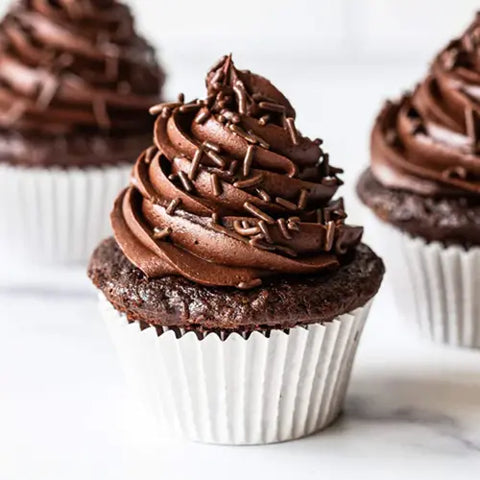
11. Fudge Frosting
If you are looking for a rich and decadent frosting, fudge frosting is the option for your bakery. It can be rather sweet, so it is often paired with plain sponges or tart desserts.
- Flavor: Decadent, sweet, and chocolatey
- Color: Light Brown to Brown
- Texture: Creamy and smooth
- Stiffness: Pipeable; soft and spreadable; may stiffen up over time to a fudge-like consistency
- Uses: Spread over yellow cake or piped onto cupcakes; because of its sweetness, it is best paired with mildly flavored sponges
- Difficulty: Easy; requires few ingredients and supplies
How to Make Fudge Frosting
There are a few ways to make fudge frosting. Some bakers choose to use cocoa powder while others use chocolate bars. You may microwave your ingredients or cook it on a stove. The instructions below are for frostings made with cocoa powder and cooked on a range top.
- On low heat, melt butter and then slowly mix in the cocoa powder.
- Once the mixture resembles a paste, transfer it to a large mixing bowl.
- On a low speed, mix in powdered sugar and milk, alternating between the two.
- Add vanilla and mix on medium-high for about 5 minutes until smooth and creamy.

12. Fondant
Fondant icing is a sugar paste and a classic choice for decorating cakes because it provides a smooth and professional look. There are three types of fondant: rolled fondant, marshmallow fondant, and poured fondant. They are all used for coating sponges and pastries but will provide slightly different results. We will be focusing on rolled fondant below.
- Flavor: Sugary and sweet; can be flavored in the cooking process
- Color: Mainly White; can be easily colored
- Texture: Smooth and marshmallow-like consistency; slightly chewy
- Stiffness: Stiff and malleable, can be rolled out into sheets and shaped
- Uses: Creates a clean and smooth cover on cakes; can be molded and cut into shapes for cake decorations
- Difficulty: Hard; requires a variety of ingredients, equipment, and physical effort
How to Make Fondant
To make rolled fondant, you’ll need to combine powdered sugar, corn syrup and a shortening to create a pliable paste or sheet for your cakes.
- Add clear unflavored gelatin to cold water and allow to sit until thick.
- Mix the gelatin and heat the mixture on a double boiler until dissolved.
- Add glucose syrup or corn syrup and glycerin to the mixture and stir until fully incorporated.
- Slowly stir in the shortening and remove from heat before it melts completely.
- Add in vanilla or additional flavoring and allow to cool until the mixture is lukewarm.
- Place half of some icing sugar in a bowl and create a well in the center and drop in the mixture.
- Stir the mixture with a wooden spoon until most of the sugar is incorporated and add the rest of the sugar in until the mixture is no longer sticky.
- Sprinkle some powdered sugar on a clean surface and dump out the fondant onto the sugar.
- Knead the fondant until it is smooth and pliable. Add more sugar if it is too soft or wet.
